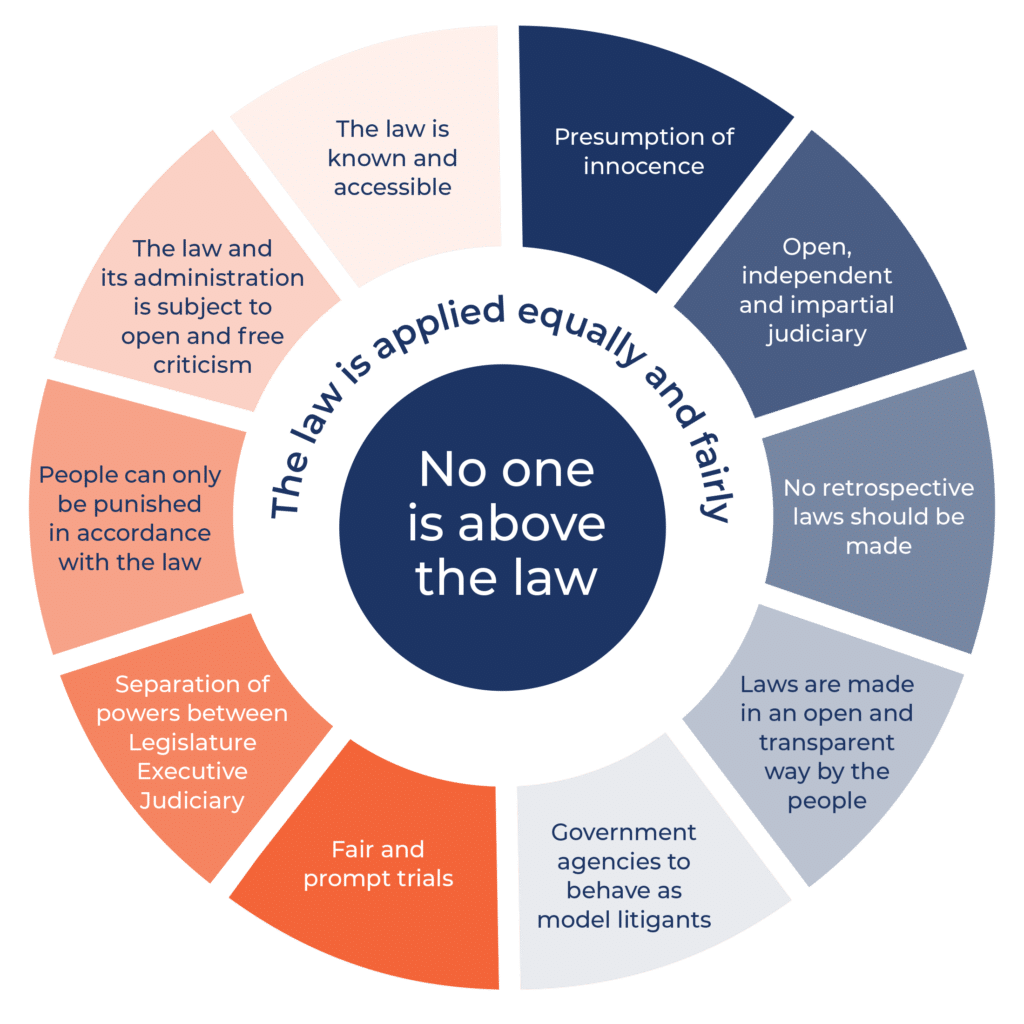On the same day that the High Court handed down its ruling on expert evidence in Honeysett v R, dealt with in another case note, it also handed down a ruling about DNA evidence, in Fitzgerald v R [2014] HCA 28. In a mere 37 paragraphs, the Court unanimously quashed Daniel Fitzgerald’s convictions, saying that no jury, acting reasonably, could possibly have found him guilty on the evidence available.
Important Links
- High Court Judgment Summary
- High Court Chronology of the Case
- High Court’s audio-visual recording of the hearing
- See the High Court Case page for other documents related to the case.
According to the prosecution, Fitzgerald had been part of a group of up to a dozen men who had arrived at a property in Adelaide’s north, carrying axes and gardening forks, in the early hours of 19 June 2011, after a disagreement at a party at the property the previous evening had gotten out of hand. The group allegedly split up into two, forcing entry to the property through the front and back doors. Those who didn’t have an axe or gardening fork “armed themselves opportunistically” once they had entered the house. The group then attacked the two occupants of the house; witnesses remembered seeing one of the occupants being stabbed with a garden fork. This occupant later died, while the other sustained serious brain injuries, as a result of being severely beaten after confronting the group at the front door of the property.
Fitzgerald was charged with murder and “aggravated causing serious harm with intent to cause serious harm” before the Supreme Court of South Australia, along with one other member of the group of men, Grant Sumner. Although there was no evidence that either Fitzgerald or Sumner had “inflicted the fatal blow on the deceased or the blows that occasioned serious injury” to the other occupant, they were charged under joint criminal enterprise law, which says that where:
- two or more people have a common plan to commit a crime,
- a crime is committed which falls within the scope of that plan, or was foreseeable given the scope of the plan, and
- they are all present when the crime is committed, then
- all members of the group may be found individually liable, whether or not they actually committed each individual element of the crime.
So, in Fitzgerald’s case, it did not matter whether he struck either occupant at all. If the prosecution could prove the existence of a common plan to murder or cause serious harm to the occupants, and could place Fitzgerald at the scene when the crime was committed, he could be found guilty of murder.
The problem arose with the way the prosecution tried to prove that Fitzgerald had been present. There was not a lot of evidence to place him at the scene. None of the six witnesses to the attack knew Fitzgerald, and when they were shown photos of him afterwards, none of them identified him as one of the attackers. DNA evidence was taken from a range of objects at the crime scene, and none of them matched Fitzgerald. Five samples were taken from a didgeridoo that was stored on the property, and four of them did not match Fitzgerald. However, one mixed sample, taken from two small “reddy-brown stains,” one measuring 2 millimetres by 1 millimetre, and the other measuring less than 1 millimetre in diameter, contained some DNA that matched Fitzgerald’s.
The prosecution used this one sample to argue that Fitzgerald had been present for the commission of the crime, and so could be convicted as part of a joint criminal enterprise. Fitzgerald argued that the DNA could have been transferred another way. Expert evidence at the trial established that ‘secondary transfer’ of DNA was possible, although unlikely. Secondary transfer is where person A has contact with person B, and then person B touches object C; person A’s DNA may be transferred to object C, even though there has never been any direct contact. Fitzgerald brought evidence to show that he had attended a boxing match with Sumner the evening before the attack, and had shaken hands with Sumner on two occasions. One of the witnesses then testified that they had seen Sumner sitting in a room near the didgeridoo during the party the evening before the attack. Fitzgerald suggested this was a reasonable alternative explanation for how his DNA had come to be on the didgeridoo at the property. The jury in the Supreme Court of South Australia disagreed, and convicted him on both counts. As a result, Fitzgerald was sentenced to life imprisonment, with a non-parole period of 20 years.
In 2013, Fitzgerald appealed to the SA Court of Criminal Appeal, but that court dismissed his appeal, saying that his explanation relied on “the occurrence of a succession of unlikely events,” and that it was open to a jury, acting reasonably, to reject this alternative explanation, and find him guilty beyond reasonable doubt.
Finally, Fitzgerald appealed to the High Court. In its brief judgment, the High Court unanimously disagreed with the SA Court of Criminal Appeal, saying, “it could not be accepted that the evidence relied on by the prosecution was sufficient to establish beyond reasonable doubt that the appellant was present at, and participated in, the attack.” The lack of any evidence beyond the DNA sample, combined with the expert testimony, which acknowledged the possibility of secondary transfer, should not have convinced the jury. For this reason, “the jury, acting reasonably, should have entertained a reasonable doubt as to the appellant’s guilt.”
This case illustrates the dangers of convictions based solely on DNA evidence. As Professor Jeremy Gans writes, the science of DNA and its transfer is still in its infancy, and has, on occasion, already led to some serious miscarriages of justice. The High Court’s decision to give Daniel Fitzgerald the benefit of the doubt reflects not only Lord Sankey’s “golden thread” of the presumption of innocence that runs through our legal system, but also the dangers of questionable evidence in criminal convictions. It is crucial that criminal convictions are based on reliable evidence that leaves no room for any reasonable doubt.
 This case note was penned by William Shrubb, UNSW Intern. Join the discussion about rule of law issues on Twitter @RoLAustralia.
This case note was penned by William Shrubb, UNSW Intern. Join the discussion about rule of law issues on Twitter @RoLAustralia.

